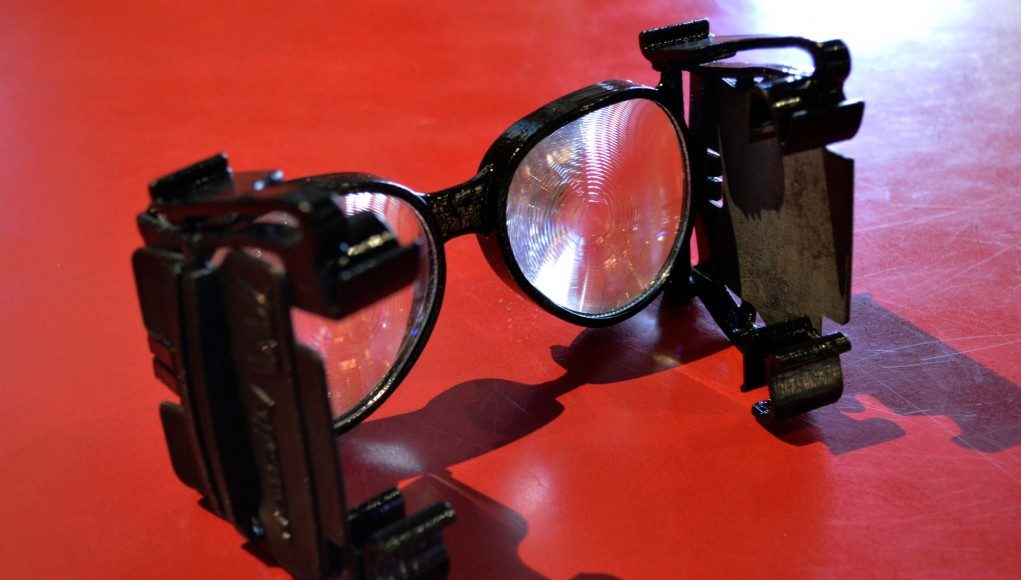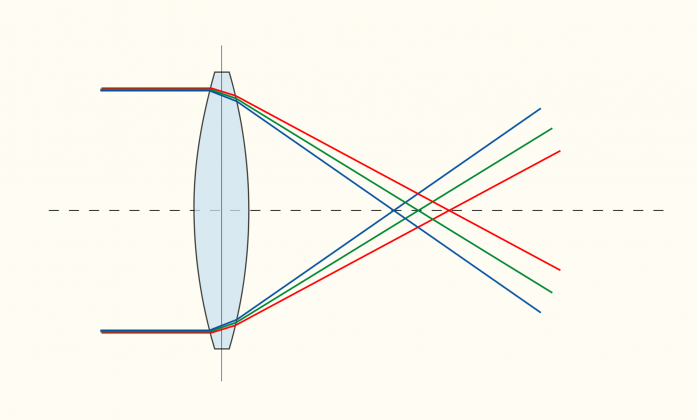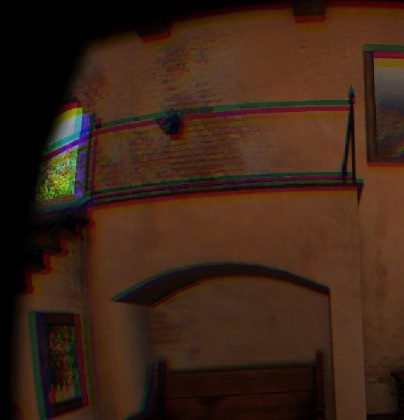After hearing positive reports of Wearality’s 150 degree VR lenses, I was excited to try them for myself. Having done so, I came away with a sense that, barring entirely new ways of bending light, there is no such thing as a ‘perfect’ lens for VR, only one that trades certain characteristics for others.
When it comes to engineering a lens for VR, you need to consider several important factors: weight, size, cost, field-of-view, and fidelity. In every case I’ve seen so far, these factors are intrinsically linked—you can’t have it all, you can only optimize for the characteristics that you want, but you’ll have to give in on some others.
This held true for Wearality’s 150 degree lenses which recently made a splash on Kickstarter. The company packed them up into a VR smartphone adapter called the Wearality Sky, which surpassed its crowdfunding goal by 17%, raising $117,650.
I met with Wearality CEO Michael Jones who introduced me to the company’s patented double-Fresnel lens that was spun out of Lockheed Martin, the well known aerospace company that largely develops military technology for the U.S. government. Jones told me that the double-Fresnel design wasn’t the only thing that’s unique about their approach.
“You won’t find another curved Fresnel lens out there,” he said. “It’s a whole category better. It’s not like it’s just 8% better in sharpness, it’s entirely sharp. It doesn’t have a sweet spot. It doesn’t have chromatic aberration at the edges… and of course it has the really big field-of-view.”
Used to the ~90-110 degree field of view of in-development consumer VR headsets over the last few years, I was excited to see what Wearality’s lenses could do. Jones handed me the Wearality Sky, with a Nexus 6 attached, and I held it up to my eyes to see a scene of a rollercoaster inside.
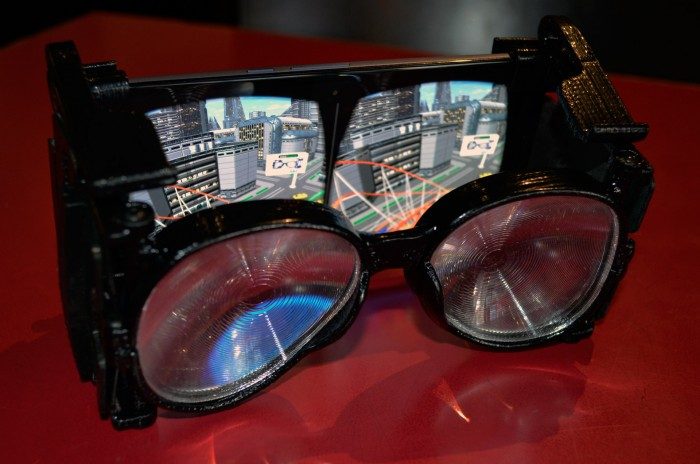
At first, I wasn’t too thrilled with what I saw. “The-field-of-view looks no wider than a DK2,” I thought to myself. But then I tapped the screen on the Nexus 6 and the field-of-view opened up far wider, and much more impressively so. Wearality, it turns out, created a special app which cycles through the typical field-of-view Cardboard, the Rift DK2, and finally the full field-of-view of the Nexus 6. It turns out it was set to the DK2 option when I first put it up to my eyes.
Correctly set to the full field-of-view, there was a massively noticeable difference. The scene encompassed my view far more than I’ve seen on other headsets, including the latest prototypes from Oculus, Valve, and Sony. And compared to most VR smartphone adapters, like Google Cardboard, it’s in a different ballpark. The only headset I’ve personally ever seen to exceed Wearality’s field-of-view is the 210 degree InfinitEye.
So yes, the field-of-view claim stands up. So does that of the lack of chromatic aberration, an artifact of certain lens systems that causes colors to separate. I noted no chromatic aberration while testing the Wearality Sky’s lenses.
On the Rift DK2, Oculus corrects for chromatic aberration by creating an opposite separation, such that the lens ultimately bends the colors back into place. It’s effective, but not perfect.
Focus was great on the Wearality lenses too, even without a custom adjustment for my IPD, thanks to the large exit-pupil (or ‘sweet spot’). And on top of all of that, the lenses are small, lightweight, and apparently reasonably priced. So what’s not to love?
While the Wearality lenses effectively compensate for issues presented by other lenses, it also introduces some of its own.
Most notably is light scattering caused by the Fresnel ridges of the lens. In bright scenes like the rollercoaster, they weren’t terribly noticeable. But once I stepped into the high contrast views of Titans of Space (bright objects against the dark background of space), the light scattering became apparent. I saw fuzzy bands of light in areas of the screen that weren’t intended to be illuminated by the screen itself. Once I got a taste for the bands, they seemed to stick out more when I went back to the bright rollercoaster scene—like when someone reminds you that you can actually see your own nose at all times and then suddenly you can’t not notice it.
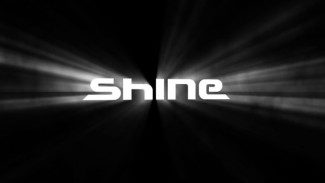
And then there’s the artifact that I’ve dubbed ‘light rays’ (if there’s a technical term for this, someone please let me know), which I saw prominently from high contrast elements of the scene. I’ve seen the light ray artifact in both the Oculus Rift Crescent Bay and HTC Vive (which both also use Fresnel lenses). It’s difficult to describe: it appears as streaks of light coming from the edges of bright elements of the scene which are surrounded by dark elements. It’s especially noticeable with bright text on a dark background (like in the case of the green text on the ‘dashboard’ in Titans of Space). As you move your head around the pointing direction of the light rays appear to shift, perhaps in relation to the very center of the lens.
See Also: Notes on Crescent Bay – Fresnel Lenses, Fixed Black Smear, Light Ray Artifact, and More
While the sweet spot for focus is indeed very large, the light ray artifact seemed to have a very tight sweet spot. If I wasn’t looking through the very center of the lens, I could see it plainly. My best guess is that peering through the small un-Fresneled portion at the very middle of the lens is where the artifact disappears. If I were able to adjust the lens IPD, it probably wouldn’t be much of a problem, but the same could be said about the DK2’s lenses and their issue with chromatic aberration.
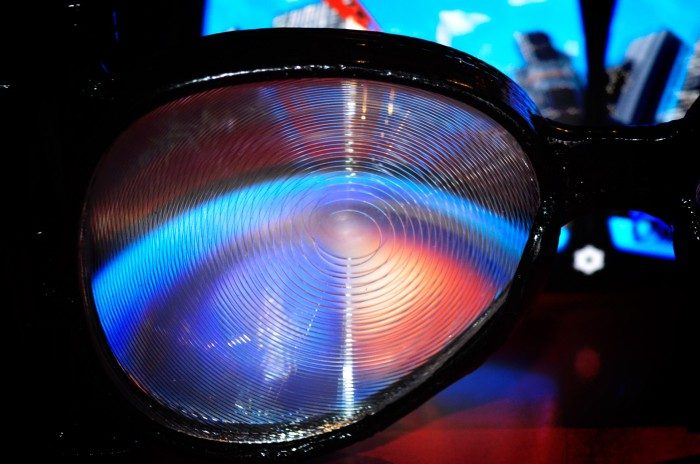
Ultimately, the Wearality lenses excel in some areas, but those benefits don’t come for free. Is the increased field-of-view and lack of chromatic aberration worth the light scattering and light rays? Or would you rather have a smaller field of view with no light scattering or light rays, but with the potential for chromatic aberration? As I say, a balancing act.
Wearality has primarily touting these lenses as being much better than what you’ll find in Google Cardboard and other VR smartphone adapters—and that’s true. When it comes to Cardboard, I’d definitely trade a ~60 degree field-of-view for a 150 degree field-of-view, even with the added artifacts. But if I can get a 100 degree field-of-view without those artifacts, suddenly the decision becomes harder.
At 150 degrees, it feels like Wearality is pushing field-of-view aspect, but possibly at the cost of enhancing Fresnel artifacts. Oculus and Valve/HTC, at 110 degrees, might be holding back on field-of-view to reduce those artifacts to an extent, or maybe they’re stuck there without the same curved Fresnel tech as Wearality. In the end, users will likely have their own preference, and VR headset makers will tout their wares to appeal to one characteristic over the other—that is until someone makes a magic lens that does it all.

